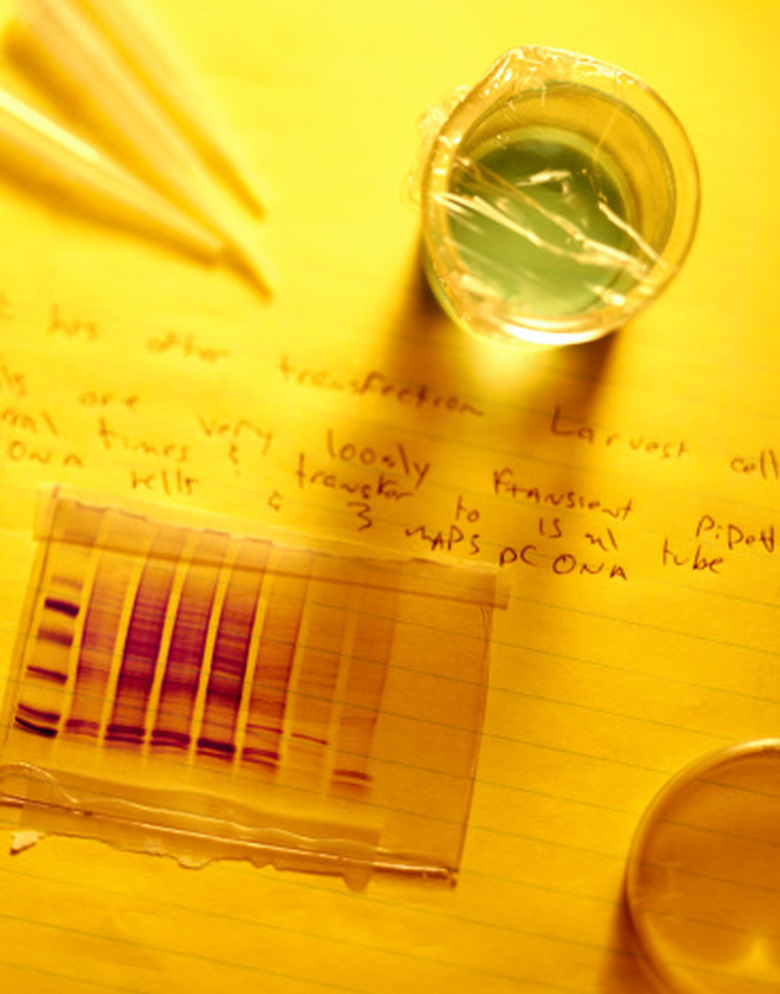How To Read A Western Blot
Western blots are a type of analytical technique which may be used or requested by clinicians to arrive at a diagnosis. Western blots work by separating all of the different proteins within a sample, usually a blood sample. Once these proteins have been separated, substances called antibodies can be used to detect specific proteins. The presence or absence of these specific proteins, or the levels of the detected protein, will lead to the diagnosis. If using a diagnostic Western blot, a clinician should request the test, using a reliable laboratory for this analysis.
Reading the Western Blot Results
Step 1
Examine the results received from the clinician. Depending on the infection or illness being tested for, there may be several different bands reported from the Western blot, each with either a positive or a negative result. There may be some bands reported for the Western blot which are not indicative of a result. Ensure the information provided by the clinician informs which blots are key.
Step 2
Look for the sizes of the bands. These will be represented by a number, either followed by "kDa" or preceded by "p." This is the size of the protein which has been detected and is the scale on which the proteins are separated in a Western blot. It is these differently numbered bands that represent different proteins and will determine a positive result or not.
Step 3
Determine which bands have a positive result and what this may mean. For example, with the test for Lyme disease, there are several different bands which may produce a positive result, and any one of these will mean a positive result. Other tests may simply produce non-significant bands. These may not be reported, but ensure it is clear which are the important bands. Specific bands which show a positive result means a positive result for the infection that was being tested for.
Step 4
Discuss the results and any concerns or questions with a clinician. A positive result may require some treatment, and the consequences of this should also be discussed with the clinician who ordered the Western blot diagnostic test.
TL;DR (Too Long; Didn't Read)
If any of the results from a Western blot remain unclear, check with a clinician.
Cite This Article
MLA
Smith, Jess. "How To Read A Western Blot" sciencing.com, https://www.sciencing.com/read-western-blot-7444156/. 22 November 2019.
APA
Smith, Jess. (2019, November 22). How To Read A Western Blot. sciencing.com. Retrieved from https://www.sciencing.com/read-western-blot-7444156/
Chicago
Smith, Jess. How To Read A Western Blot last modified March 24, 2022. https://www.sciencing.com/read-western-blot-7444156/
